-
Page Navigation Links:
- Skip to Site Navigation Links
- Skip to Features

- The University of Iowa
- Spectator
- Monthly News for UI Alumni and Friends

Like most campuses, The University of Iowa experienced a dramatic increase in enrollment following World War II. The number of full-time students doubled in five years, from 5,400 in 1945 to nearly 11,000 in 1950. Returning GIs and their spouses contributed substantially to these numbers.
In response to the unprecedented growth, the University beginning in 1946 constructed temporary barracks to house married students and their families. By 1954, there were eight clusters of these barracks containing 670 apartment units west of the Iowa River. One exception was Hawkeye Village, which was actually a trailer community situated along the east bank of the Iowa River, north of Burlington Street near the present-day Main Library.
Three of the eight clusters—Quonset, North, and Riverside parks—were located along or near North Riverside Drive, north of the arts-theater complex and in the vicinity of where Hancher Auditorium was eventually built. Templin Park, also nearby, was directly west of arts-theatre across Riverside Drive. Westlawn and Finkbine parks were situated near the Veterans Administration Hospital, and Stadium Park was nestled in between the stadium (to the east) and railroad tracks (west). South Park was just southeast of the Field House, near South Quadrangle.
Graduate student John Franz and his wife Janice moved into their Hawkeye Village trailer in August 1951, just after their wedding. It would be their home for the next ten months.
“When we returned from our honeymoon my dad drove us to Iowa City,” Janice wrote in her memoir of that year, which is part of the Historical Papers Collection at the University of Iowa Archives. “There we saw our green trailer along the banks of the Iowa River....It looked beautiful to us! Now that I am a mother and grandmother I can only imagine my dad’s thoughts. He was very sweet and didn’t say a word. John insisted on carrying me over the threshold and managed to hit both of our heads on the top door frame trying to get in!
“The trailer had wood paneling which looked nice. I eyeballed the inside to be about six feet wide, twenty feet long and six feet plus in the center. John had to walk in the middle since he was almost six feet tall and the roof sloped down into the sides....You could hardly walk in the space left when the sofa was open.”
Though intended to be temporary, some of the barracks remained in use for up to 30 years. Templin Park was among the last of the post-war era structures to be razed, in 1975.
—David McCartney, University Archivist
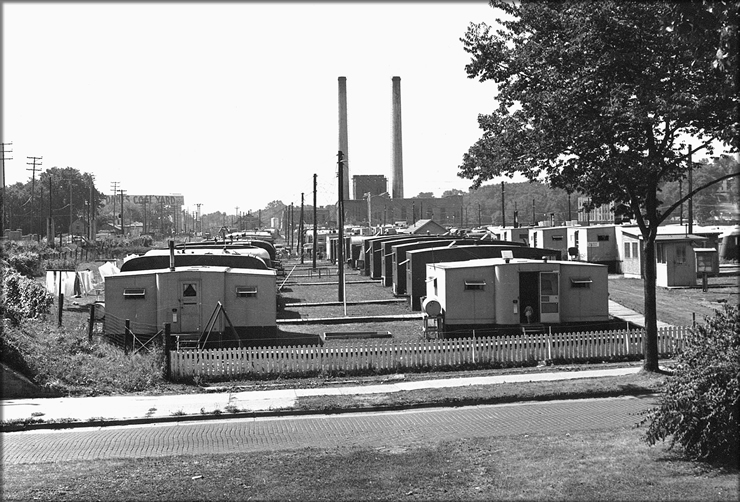
Hawkeye Village, 1947, looking south toward Burlington Street. Power Plant is in the background; hydraulics laboratory is to the right (obscured by tree).
(University Archives, F.W. Kent Collection of Photographs, Buildings series, Hawkeye Village folder)
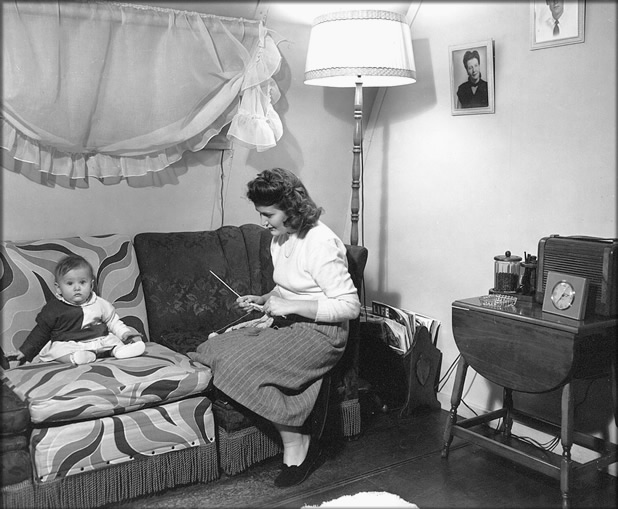
Mother with child in a temporary housing unit (location unknown), 1948.
(Source—University Archives, F.W. Kent Collection of Photographs, Buildings series, Married Housing folder)
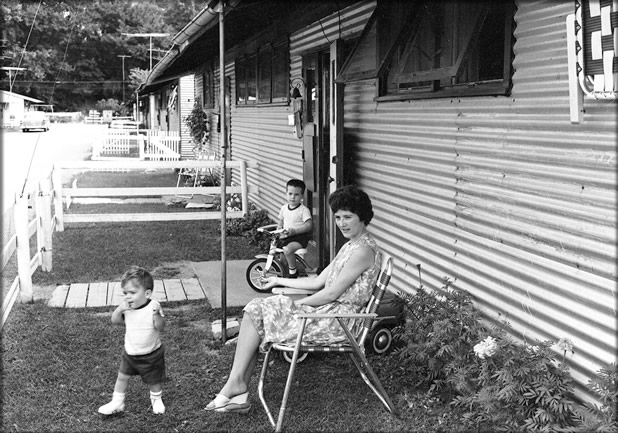
Mother with children at Riverside Park unit, 1966.
(Source—University Archives, F.W. Kent Collection of Photographs, Buildings series, Married Housing folder)
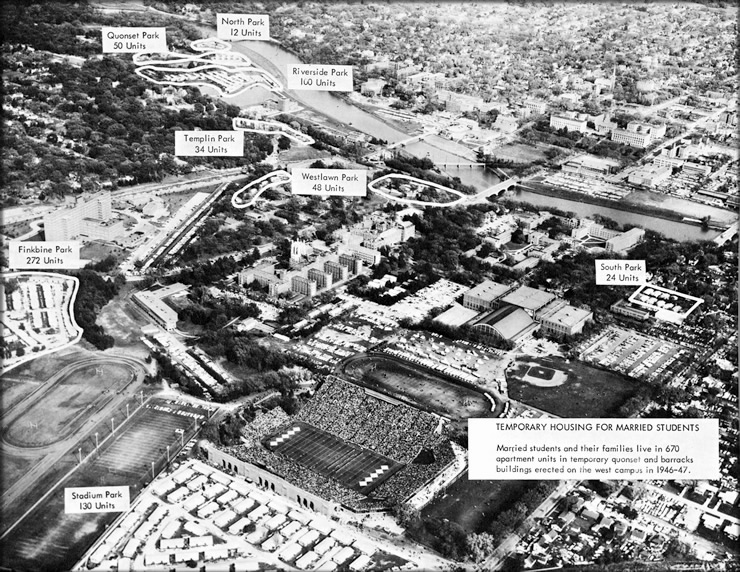
Aerial view of the campus depicts locations of temporary housing units, 1954, from an unidentified University publication.
(Source—University Archives, Campus Buildings and Grounds Vertical File, Temporary Buildings folder)
NEXT MONTH:
Moving Calvin Hall, or
Rearranging the Pentacrest’s Furniture
If you’ve got memories to share, please send them to Spectator@IOWA, and we’ll run some next month.
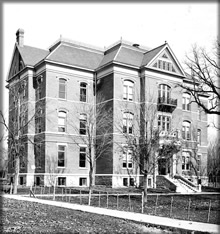
(Source—University Archives, F.W. Kent Collection of Photographs, Buildings series, Calvin Hall folder)
Previous Old Gold editions:
© The University of Iowa 2009